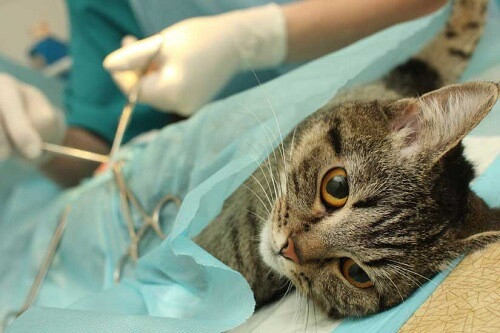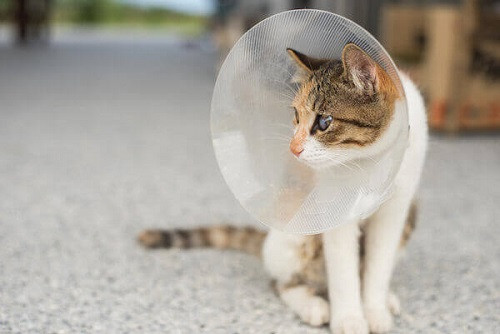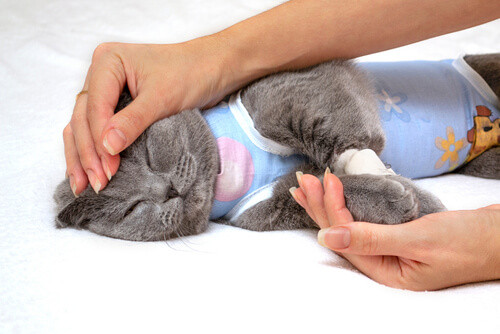 Spay and neuter surgery for cats.
Spay and neuter surgery for cats.
Neutering your male cat is a responsible decision with significant benefits for your feline friend, your household, and the wider community. Beyond preventing unwanted litters and contributing to the reduction of pet overpopulation, neutering, also known as castration, offers a range of health and behavioral advantages. If you’re considering this important procedure, a primary question likely on your mind is: “How much does it cost to neuter a cat?” The answer isn’t fixed and can vary considerably based on several factors. Let’s delve into the typical costs associated with neutering a cat and explore ways to make this essential procedure affordable.
Understanding the Typical Costs of Neutering
Neutering, technically termed castration, involves the surgical removal of a male cat’s testicles. This routine surgery is typically less complex than spaying a female cat, which involves abdominal surgery. However, the cost can still fluctuate depending on various elements.
Generally, you can expect the cost to neuter a cat to range from $100 to $300 when performed at a traditional veterinary clinic. However, this is just an estimated range, and the actual price can be influenced by your geographic location, the type of veterinary facility you choose, and any additional services included in the surgical package.
 Spay surgery for cats.
Spay surgery for cats.
It’s crucial to understand what factors contribute to these cost variations to make informed decisions and budget accordingly.
Key Factors Influencing Cat Neutering Costs
Several elements can affect the final cost of neutering your cat. Being aware of these factors can help you understand the price breakdown and potentially find cost-saving options.
1. Geographical Location
Just like human healthcare, veterinary service costs are influenced by your geographical area. Urban areas and regions with a higher cost of living typically see higher veterinary fees compared to rural locations. The demand for veterinary services and the general overhead costs of clinics in your area play a role in pricing.
2. Type of Veterinary Clinic or Provider
The type of facility you choose for the neutering procedure significantly impacts the cost. Options range from full-service private veterinary clinics to low-cost spay/neuter clinics and mobile veterinary units.
- Private Veterinary Clinics: These clinics offer comprehensive services, often including pre-anesthetic bloodwork, IV catheter and fluids, and advanced surgical monitoring as part of their standard neutering procedure. This comprehensive care contributes to a higher cost but offers peace of mind and potentially reduces risks, especially for older cats or those with underlying health conditions.
- Low-Cost Spay/Neuter Clinics: These clinics specialize in high-volume spay and neuter surgeries, allowing them to offer significantly reduced prices. They often streamline their procedures and may not include the “extras” offered by private practices as standard. However, the veterinarians are licensed and experienced in these routine surgeries. These clinics are excellent options for pet owners seeking affordable neutering.
- Mobile Spay/Neuter Clinics: Often operated by non-profit organizations, mobile clinics bring affordable spay/neuter services directly to communities, sometimes in mobile units like buses or RVs. They offer similar cost savings to low-cost clinics and improve accessibility in underserved areas.
3. Pre-Surgical Testing and Additional Options
The level of care provided during the neutering procedure can also affect the overall cost. While basic neutering is relatively straightforward, some veterinarians recommend or offer optional pre-surgical procedures:
- Pre-anesthetic Bloodwork: This blood test, conducted before anesthesia, helps assess your cat’s organ function and identify any underlying health issues that could pose risks during surgery. It adds to the cost but enhances safety, especially for older cats or those with unknown health histories.
- IV Catheter and Intravenous Fluids: An IV catheter allows for immediate administration of fluids and medications during and after surgery. IV fluids help maintain hydration and blood pressure under anesthesia, contributing to a smoother recovery. This is often recommended, especially for longer procedures or cats with potential health concerns.
- Advanced Anesthetic Monitoring: Beyond basic monitoring, some clinics offer advanced monitoring equipment to track vital signs like ECG, blood pressure, and oxygen saturation more closely throughout the surgery. This enhances safety but can increase the cost.
Choosing which, if any, of these additional services to include will affect the final price. Discuss these options with your veterinarian to determine what’s best for your cat’s individual needs and your budget.
4. Undescended Testicles (Cryptorchidism)
In some male cats, one or both testicles may not descend into the scrotum, a condition called cryptorchidism. If this is the case, the neutering surgery becomes more complex. It may require more extensive surgical exploration to locate and remove the undescended testicle(s), increasing both the surgery time and the cost. If your veterinarian suspects cryptorchidism, they will discuss the potential for a higher surgical fee.
Finding Affordable Cat Neutering Options
Fortunately, there are numerous resources available to help cat owners neuter their pets affordably.
 Cat undergoing surgery.
Cat undergoing surgery.
- Animal Shelters and Rescue Organizations: Adopting a cat from a shelter or rescue often includes neutering as part of the adoption fee. Many organizations proactively neuter animals before adoption to combat pet overpopulation, making this a cost-effective way to acquire a pet and ensure they are already neutered.
- Low-Cost Spay/Neuter Clinics: As mentioned earlier, these clinics are specifically designed to provide affordable spay/neuter services. Search online for “low-cost spay neuter clinic near me” to find options in your area. The ASPCA also provides a directory of low-cost spay/neuter programs on their website.
- Mobile Spay/Neuter Clinics: Check for mobile spay/neuter clinics in your region, often advertised through local animal welfare organizations or community events. The Lucy Pet Foundation is one example of a non-profit operating mobile spay/neuter clinics.
- Charitable Programs and Vouchers: Some humane societies and animal welfare organizations offer subsidized or free spay/neuter programs for low-income pet owners or through special initiatives. Inquire with your local shelters and rescue groups about available programs or voucher options.
- Trap-Neuter-Release (TNR) Programs: If you are concerned about feral or stray cats in your community, TNR programs often offer free neutering for cats that are trapped, neutered, and then returned to their outdoor homes. This is a crucial service for managing community cat populations humanely.
Benefits of Neutering Beyond Cost Savings
While the cost of neutering is a valid consideration, the long-term benefits far outweigh the initial expense.
- Health Benefits: Neutering eliminates the risk of testicular cancer and reduces the likelihood of certain prostate problems. Neutered cats also tend to roam less, decreasing their risk of injuries from fights or traffic accidents.
- Behavioral Benefits: Neutering significantly reduces or eliminates undesirable male cat behaviors such as urine marking (spraying), fighting with other cats, and the urge to roam and escape in search of a mate. This leads to a calmer, more домаsстиc pet and a more peaceful household.
- Community Benefits: By preventing unwanted litters, neutering plays a vital role in controlling pet overpopulation, reducing the strain on animal shelters, and decreasing the number of homeless animals.
Frequently Asked Questions About Cat Neutering Costs
How much does it cost to get a cat “fixed”?
The term “fixed” generally refers to both spaying (for females) and neutering (for males). The cost to get a cat “fixed” depends on whether you are spaying or neutering. Neutering a male cat typically costs between $100 and $300 at a standard vet clinic, but can be significantly less at low-cost clinics. Spaying a female cat generally costs more, ranging from $200 to $500 at a regular vet.
How much does it cost to neuter a cat specifically?
As detailed above, the average cost to neuter a cat at a traditional veterinary clinic is approximately $100 to $300. This price range can vary based on your location, the type of clinic, and whether you opt for any additional pre-surgical services. Low-cost clinics may offer neutering for as little as $25 to $75.
 Cat recovering after surgery.
Cat recovering after surgery.
Neutering your cat is an investment in their well-being and responsible pet ownership. By understanding the factors influencing cost and exploring affordable options, you can ensure your feline companion receives this essential care without breaking the bank. Consult with your veterinarian or local animal shelters to find the best and most affordable neutering solution for your cat.
